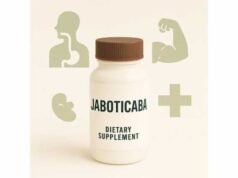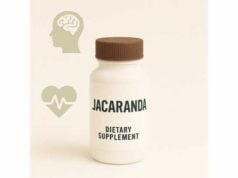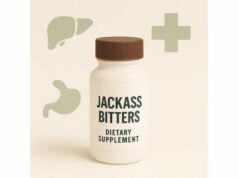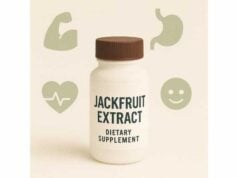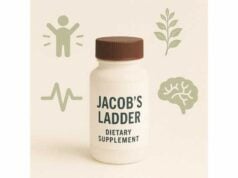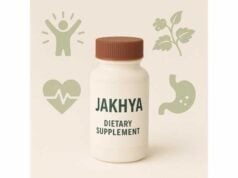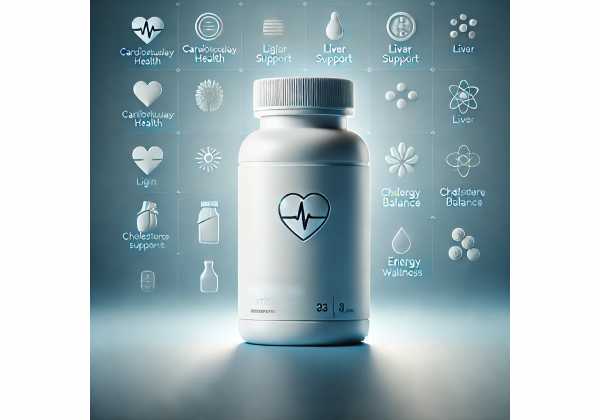
Jerusalem artichoke (Helianthus tuberosus), also called sunchoke, is a knobbly, nutty-tasting tuber in the sunflower family. Unlike potatoes, its carbohydrates are stored mostly as inulin—a non-digestible prebiotic fiber that feeds beneficial gut bacteria. That single fact explains much of the plant’s appeal: better bowel regularity, gentler blood-sugar rises after meals, and practical ways to increase daily fiber. It’s also versatile in the kitchen (raw, roasted, pureed, or pickled), and appears in certain supplements and functional foods as powder or extract. Still, inulin is a FODMAP, which means some people—especially during irritable bowel syndrome (IBS) flares—may feel gassy or bloated if they ramp up intake too fast. This guide distills the real-world uses, what the research shows, how much to take, and when to avoid it, so you can decide whether Jerusalem artichoke fits your goals for gut health, glucose control, or simply more fiber from whole foods.
Quick Overview
- Prebiotic inulin may support regularity and beneficial gut bacteria.
- Eating 100 g before a meal can blunt post-meal glucose for some adults.
- Typical dosage: 30–75 g raw tuber (≈5–15 g inulin) or 3–10 g inulin powder daily.
- Start low to limit gas and bloating; increase over 1–2 weeks.
- Avoid or use with medical guidance if you have FODMAP-sensitive IBS, active SIBO, or significant GI disease.
Table of Contents
- What is Jerusalem artichoke and how does it work?
- Evidence-backed benefits you can expect
- How to use Jerusalem artichoke day to day
- How much should you take and when?
- Side effects, interactions, and who should avoid it
- What the research actually shows so far
What is Jerusalem artichoke and how does it work?
Jerusalem artichoke is a hardy perennial sunflower native to North America. Its edible tubers store carbohydrates as inulin, a chain of fructose units that humans don’t digest in the small intestine. Instead, inulin reaches the colon intact and becomes fuel for resident microbes—especially bifidobacteria and other saccharolytic species. As these microbes ferment inulin, they produce short-chain fatty acids (SCFAs) such as acetate, propionate, and butyrate. SCFAs help maintain the intestinal barrier, provide energy to colonocytes, and influence motility and water balance, which together support regularity and stool form.
Because inulin is not metabolized to glucose in the small intestine, meals that include Jerusalem artichoke tend to have a lower glycemic impact than similar carbohydrate-matched meals made with starch. In practical terms, that can mean a smaller post-meal blood-sugar rise for some individuals. A related, under-appreciated effect is satiety: fermentable fibers can increase feelings of fullness via gut–brain signaling, partly through peptide YY and GLP-1 pathways, although the magnitude is person-specific.
Beyond inulin, the tuber contains potassium and trace minerals and small amounts of phenolics. These aren’t the main drivers of its functional effects, but they do contribute to overall nutritional value. The prebiotic fraction is the star—and it’s potent. Depending on variety and processing, Jerusalem artichoke ingredients can deliver more than half their weight as inulin-type fructans. That’s why a small serving can meaningfully change your daily fiber profile.
Mechanistically, the “how it works” can be summarized in three steps:
- Delivery: inulin bypasses digestion and arrives in the colon.
- Fermentation: microbiota metabolize inulin, increasing SCFAs and shifting microbial composition toward more bifidobacteria in many people.
- Effects: improved bowel function, potential support for metabolic markers (e.g., post-meal glucose), and, in some, modest effects on lipids and satiety.
Two caveats belong alongside those mechanisms. First, individual microbiomes vary. Not everyone experiences the same degree—or direction—of change in microbial composition or SCFAs. Second, rapid increases in inulin intake can cause gas, cramping, or bloating. Titrating slowly and splitting doses across meals usually improves tolerance.
Finally, it’s worth noting language. Despite the name, Jerusalem artichoke has nothing to do with globe artichoke. “Jerusalem” likely arose from a corruption of the Italian girasole (sunflower), and “artichoke” from its mild, artichoke-like flavor. In most grocery stores you’ll see it labeled “sunchoke.”
Evidence-backed benefits you can expect
1) Digestive regularity and prebiotic support.
In normal-fiber diets, adding inulin-rich foods often increases stool frequency and softens hard stools within days to weeks. Many controlled trials with inulin in the 5–20 g/day range show increases in bifidobacteria and other saccharolytic taxa. That “bifidogenic” effect is one of the most consistent findings in human prebiotic research. Practically, people who feel constipated on low-fiber patterns often notice more comfortable, regular bowel movements when they add modest amounts of Jerusalem artichoke across the week.
2) Smaller post-meal glucose rises (in some).
A useful, food-first strategy for taming glycemic excursions is to include fermentable fiber with carbohydrate-rich meals. Grated or cooked Jerusalem artichoke before or alongside a meal can blunt post-prandial glucose in some adults. The effect size depends on dose (around 100 g raw tuber proved a threshold in one human trial), what the rest of the meal contains, and your baseline glycemic status. For people with prediabetes working on post-meal spikes, pairing a portion of sunchoke with rice, pasta, or bread is a simple experiment—track your response with a glucometer if you have one.
3) Potential lipid support.
Through SCFA signaling and altered bile acid cycling, fermentable fibers may modestly reduce total and LDL cholesterol in certain contexts. While Jerusalem artichoke itself hasn’t been subjected to dozens of lipid-focused RCTs, its inulin fraction shares mechanisms with fibers that have: increased fecal bile acid excretion and altered hepatic cholesterol synthesis. Expect small changes (if any) and consider this a secondary, not primary, reason to use it.
4) Appetite and weight-management support (adjunct).
Prebiotics can promote fullness for some, especially when consumed before or with meals. The practical implication: a pre-meal portion of Jerusalem artichoke may help you feel satisfied with fewer calories from refined starches. This is not a stand-alone weight-loss tool, but it can be one lever in a broader pattern that emphasizes fiber, protein, and minimally processed foods.
5) Gut barrier and immune tone (emerging).
Butyrate and other SCFAs support epithelial integrity and may dampen low-grade inflammation in the gut. Some studies link inulin intake with shifts in markers related to permeability and innate immunity. Translating these mechanistic findings into everyday outcomes is ongoing, but they build a credible biological rationale for using fermentable fibers to maintain gut health.
Set expectations.
Benefits look different across people because microbiomes and baseline diets differ. If your diet already includes a lot of fermentable fiber, you might notice subtler effects. If you’re fiber-low, the change may be more obvious—but you’ll also be more prone to gas if you increase intake too quickly. Most people know within two weeks whether Jerusalem artichoke “agrees” with them.
What it probably will not do.
It won’t replace medications for diabetes or IBS. It won’t “detoxify” the colon or deliver dramatic fat loss. Consider it a high-fiber food with prebiotic properties and modest metabolic upsides, best used as part of an overall dietary pattern rather than as a cure-all.
How to use Jerusalem artichoke day to day
Choose and prep. Look for firm, unwrinkled tubers without soft spots. Scrub well—no need to peel unless the skin is tough. Because they oxidize, slice just before cooking or toss with lemon juice if prepping ahead.
Cooking methods and what they’re good for:
- Raw (shaved or grated): crunchy, nutty, slightly sweet. Add 30–50 g to salads or slaws. Raw keeps inulin intact and delivers the strongest prebiotic effect, but also the greatest chance of gas for newcomers.
- Roasted: cut into 2–3 cm pieces, roast at 200°C/400°F for 25–35 minutes until caramelized. Roasting softens texture and mellows flavor; inulin remains largely fermentable.
- Steamed or sautéed: gentler on digestion for some people; finish with lemon and herbs.
- Soups and purees: simmer with leeks and stock, then blend. Combining with potatoes can reduce intensity and help newcomers tolerate the flavor and fiber.
- Pickled: quick-pickle slices with vinegar and spices. Great as a condiment; acidity can make dishes feel lighter.
- Powdered or dried chips: convenient for blending into smoothies, yogurt, or batter; check labels for serving size and added ingredients.
Pairings that make sense:
- With starch: add to rice bowls, pasta, or grain salads to blunt glycemic impact and increase fiber.
- With protein and fat: combine with fish or legumes; a complete meal slows digestion and may further moderate post-meal glucose.
- With low-FODMAP vegetables if you’re sensitive: carrots, spinach, zucchini, and bell peppers balance the fermentable load.
Meal ideas:
- Pre-meal slaw (for glucose control): 50–100 g grated Jerusalem artichoke + cabbage, carrot, lemon juice, olive oil, and salt. Eat 10–15 minutes before a rice or pasta meal.
- Roasted tray bake: sunchokes, carrots, and chicken thighs with thyme.
- Silky soup: sautéed leeks, sunchokes, stock; blend and finish with yogurt and chives.
- Grain bowl: farro, roasted sunchokes, arugula, pumpkin seeds, and a mustard vinaigrette.
- Smoothie add-in (powder): 3–5 g Jerusalem artichoke powder with kefir, berries, and spinach.
Titration plan for sensitive stomachs:
- Week 1: 15–30 g raw (or 3 g powder) on alternate days.
- Week 2: 30–50 g raw (or 5 g powder) most days.
- Week 3: 50–75 g raw (or 7–10 g powder) as tolerated, split between meals.
Sip water through the day, and consider spacing intake from other high-FODMAP foods. If symptoms are bothersome, step back to your last comfortable level and hold there for a week before trying again.
Shopping and storage:
Store unwashed tubers in a breathable bag in the fridge for up to two weeks. Flavor sweetens slightly with cool storage. For powders or chips, choose products with minimal additives; “Jerusalem artichoke powder” or “inulin (Jerusalem artichoke)” should appear near the top of the ingredient list, and serving sizes will typically be 3–10 g.
How much should you take and when?
Food portions (whole tuber):
- Starter range: 30–50 g raw (about 3–5 thin slices) once daily with food.
- Typical range: 50–100 g raw or cooked per day, split across meals.
- Higher end for enthusiasts: up to 150 g/day, if well tolerated.
These portions deliver roughly 5–20 g of inulin/day, depending on variety and preparation. For most people, the sweet spot for a noticeable prebiotic effect without too much gas is 5–10 g inulin/day, which you can reach with ~50–75 g of raw sunchoke or ~3–7 g of a concentrated powder.
Supplement or powder:
- Begin at 2–3 g/day for 3–4 days.
- Increase by 1–2 g every 3–4 days until you reach 5–10 g/day, split in 2 doses with meals.
- Many clinical protocols use 5–20 g/day of inulin for 2–12 weeks. Most people feel best in the 5–10 g/day band.
Timing relative to meals:
- For post-meal glucose, take 50–100 g raw or cooked Jerusalem artichoke 10–20 minutes before a carbohydrate-rich meal, or include it within the meal.
- For regularity, any time is fine; split doses across meals to improve tolerance.
- For appetite support, a small pre-meal portion (e.g., a grated slaw) often works better than adding it at the end.
Special situations:
- Prediabetes/Type 2 diabetes: introduce slowly and monitor glucose response with your usual tools. Some people will see a measurable reduction in post-meal spikes at ≥100 g of the tuber before meals, while others notice little change.
- Athletes or high energy needs: use roasted sunchokes alongside starches for additional carbohydrates that are gentler on blood sugar; they can also help maintain GI comfort during training blocks with higher fiber targets.
- Low-FODMAP phase: most people in the strict elimination phase should avoid Jerusalem artichoke; reintroduce cautiously during the challenge/reintroduction stage to test your personal threshold.
How to recognize your dose ceiling:
- Persistent cramping, urgent stools, or bloating that doesn’t settle within a week after a dose increase means you likely overshot. Step down to the last comfortable dose or reduce frequency (e.g., every other day).
- If you’re not feeling any benefit after 2–3 weeks at ~7–10 g inulin/day (e.g., ~75 g tuber), Jerusalem artichoke may not be a high-value addition for your goals; consider other fibers or dietary strategies.
Side effects, interactions, and who should avoid it
Common, dose-dependent effects:
- Gas, bloating, cramping: very common when jumping quickly from little fiber to large amounts of inulin. Usually resolves by lowering the dose, splitting across meals, or cooking rather than eating raw.
- Loose stools: possible at higher intakes; reduce dose or frequency.
- Abdominal discomfort during IBS flares: because inulin is a FODMAP, it can aggravate symptoms for some people with IBS.
Less common considerations:
- Hypersensitivity/allergy: rare with edible sunflower relatives, but possible. Discontinue if you notice itching, swelling, or hives and seek care for any breathing difficulty.
- Kidney issues and potassium: Jerusalem artichokes provide meaningful potassium. Most people benefit from more potassium-rich foods, but if you have advanced kidney disease or are on potassium-sparing medications, discuss serving sizes with your clinician and dietitian.
- Diabetes medications and glucose response: fermentable fibers can modestly alter post-meal glucose in some individuals. If you use insulin or insulin secretagogues, monitor carefully when you introduce large pre-meal portions to avoid unintended hypoglycemia.
- Small intestinal bacterial overgrowth (SIBO): many clinicians recommend minimizing fermentable fibers during active SIBO treatment. If advised, wait until symptoms have stabilized before re-introducing Jerusalem artichoke at low doses.
Drug and nutrient interactions:
- There are no major drug interactions specific to Jerusalem artichoke tubers reported in standard references. That said, any significant change in fiber intake can alter absorption kinetics of some oral medications and supplements. As a simple precaution, take critical medications at least 2 hours away from high-fiber meals.
- For iron and zinc, the small amounts of phytic acid in plant foods can reduce absorption slightly; pairing meals with vitamin C sources (lemon, bell pepper) can improve mineral uptake.
Who should avoid or seek medical advice first:
- People in the strict low-FODMAP phase or with highly sensitive IBS.
- Those with active SIBO, significant GI disease, or inflammatory bowel disease flares.
- Anyone with advanced kidney disease or on potassium-sparing drugs should individualize servings.
- Individuals with a known allergy to sunflower family foods.
Safety at a glance: used as a food for centuries, Jerusalem artichoke is generally recognized as safe when consumed in typical culinary amounts. Discomfort is usually about how much and how fast you increase, not an inherent danger of the food itself.
What the research actually shows so far
On glucose control:
Human studies using real Jerusalem artichoke tubers have shown smaller post-meal glucose and changes in incretin hormones when the tuber is eaten right before a carbohydrate-rich meal. In one controlled experiment, ≥100 g grated tuber served prior to eating reduced post-prandial glucose, with a dose–response pattern. A longer 12-week randomized trial using a Jerusalem artichoke + fermented soybean powder blend in adults with impaired fasting glucose or newly diagnosed diabetes reported improvements in several glucose-related markers. Taken together, these suggest a food-as-strategy approach: a small portion of sunchoke before or within high-carb meals may help some adults temper spikes. Effects are not universal and depend on dose, meal composition, and baseline glycemic status.
On the microbiome and bowel function:
Across multiple randomized trials in adults, inulin intakes of 5–20 g/day generally increase bifidobacteria within weeks. Stool frequency often increases in constipated individuals and stool form tends to normalize. However, the most rigorous synthesis notes that microbiome changes do not always translate to consistent increases in measured SCFAs in vivo, and inter-individual variability is high. Expect modest, gut-directed benefits—great for regularity and microbial support—rather than sweeping, whole-body transformations.
On lipids, inflammation, and weight:
Data are mixed. Some trials of inulin-type fructans show small decreases in total and LDL cholesterol or inflammatory markers; others show no meaningful change. In children with obesity and in some adult cohorts, inulin has improved microbial diversity and certain metabolic readouts, but translating those findings to specific, guaranteed outcomes for every reader would be a stretch. Consider these as potential adjunct benefits, not primary reasons to use Jerusalem artichoke.
On composition and potency:
Jerusalem artichoke ingredients (powders, flakes) are exceptionally rich in inulin-type fructans, with analyses commonly reporting ~66–72% fructans by weight in prepared powders. That explains why relatively small serving sizes (3–10 g powder) can deliver prebiotic-level doses. Whole tubers vary by cultivar and storage but remain one of the densest natural sources of inulin among common vegetables.
On FODMAP sensitivity:
Clinical and educational resources for low-FODMAP diets consistently list Jerusalem artichoke as high in fructans; individuals with IBS often experience gas, bloating, and discomfort at typical culinary servings, especially when intake is increased abruptly. Real-world guidance from specialist dietitians is simple: avoid during elimination, test carefully during reintroduction, and personalize your threshold.
Bottom line:
- If you want to improve bowel regularity and feed beneficial microbes, small, steady doses work best.
- If you want to blunt post-meal glucose spikes, a ≥100 g pre-meal portion can be worth testing with self-monitoring.
- If you’re FODMAP-sensitive, take a slow, cautious approach—or choose alternative fibers that you tolerate better.
References
- Administration of Jerusalem artichoke reduces the postprandial plasma glucose and glucose-dependent insulinotropic polypeptide (GIP) concentrations in humans 2022 (RCT)
- The effects of inulin on gut microbial composition: a systematic review of evidence from human studies 2020 (Systematic Review)
- Jerusalem Artichoke Powder Mixed in Enteral Feeding for Patients Who have Diarrhea in Surgical Intensive Care Unit: A Method of Preparation and a Pilot Study 2020 (Pilot Study; Composition)
- The effects of Jerusalem artichoke and fermented soybean powder mixture supplementation on blood glucose and oxidative stress in subjects with prediabetes or newly diagnosed type 2 diabetes 2018 (RCT)
- Update: Label reading and FODMAPs 2021 (Guidance for IBS/FODMAP)
Disclaimer
This article is for general information and education. It does not replace individualized medical advice, diagnosis, or treatment. Always consult your healthcare professional—especially if you have IBS, SIBO, diabetes treated with medication, kidney disease, or any ongoing gastrointestinal condition—before making significant changes to your diet or supplement routine.
If you found this guide useful, please consider sharing it on Facebook, X (formerly Twitter), or your favorite platform, and follow us for more practical, evidence-informed nutrition content. Your support helps us continue creating high-quality resources.

